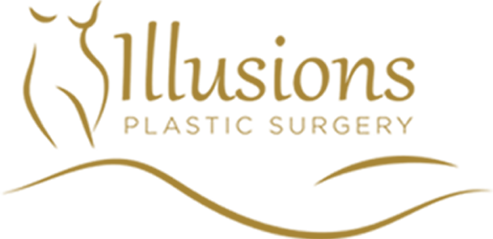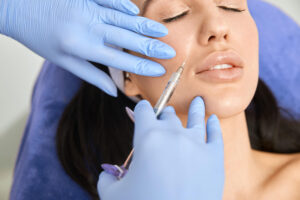Scheduling breast reduction surgery brings up many questions, but few feel more urgent than what recovery looks like.
How long before work feels manageable again? Sleeping feels tricky? Swelling sticks around too long? These concerns show up early in the decision-making process and stay until full healing happens.
This article focuses entirely on breast reduction recovery. Straightforward answers, a detailed timeline, typical symptoms, recovery tips, and common mistakes take center stage.
The goal is to match what people often search online—what breast reduction recovery includes, what happens during the first few weeks, and how the body usually responds.
What breast reduction recovery looks like from day one
Recovery starts right after surgery. Each stage brings different changes and care instructions. Knowing what usually happens from the beginning helps avoid unnecessary worry.
First 24 to 48 hours
Swelling, light bleeding, and fatigue may occur early. Surgical drains and dressings stay in place. Movement remains limited, and full rest stays recommended. A mild pain or pressure in the incision area might appear.
First week post-op
Bruising becomes more noticeable. Drains often come out between day two and five. Follow-up visits help track the healing progress. Arm and chest movements stay limited. The surgical bra offers support and reduces discomfort.
Weeks 2 to 4
Some patients return to light, non-physical work. Swelling tends to decrease more clearly. Non-dissolvable stitches might get removed around week two. Light walking supports circulation. Healing becomes more visible, though the process stays ongoing.
One to three months
Most daily routines resume. High-impact workouts remain on hold until the surgeon approves. Scars begin to fade and breast shape adjusts gradually. Some patients report tingling or changed sensitivity during this breast reduction recovery stage.
Read more:
👉Breast Reduction Surgery Guide: Procedure, recovery, and results
Common symptoms during breast reduction recovery
During breast reduction recovery, the body responds in several ways. Some symptoms show up early, others last longer. Recognizing typical reactions helps reduce stress and avoid confusion.
Pain, swelling, and bruising
Mild to moderate pain appears during the first few days. Prescribed pain relief helps manage this discomfort. Swelling peaks during the first two weeks and varies in intensity. Bruising spreads across the chest area and fades on its own.
Sensitivity or numbness
Changes in nipple or lower breast sensation occur often. Numbness tends to improve over time, though it may linger for months. Tingling also becomes noticeable as healing progresses through the breast reduction recovery period.
Drainage and bandages
Surgical drains stay in place for a few days to remove fluid and support healing. Bandages protect the area and reduce friction. Light fluid leakage might appear but doesn’t usually mean complications.
Emotional ups and downs
Hormonal shifts, physical limits, and body image changes bring mood swings, frustration, or low moments. Support from family and regular check-ins with the surgeon usually help ease the experience.
Breast reduction recovery tips that help speed up healing
Several small choices help make breast reduction recovery smoother and reduce setbacks. Daily habits often shape how well the body reacts after surgery.
- Sleep position and rest schedule: Lying flat on the back with head and neck supported usually helps reduce swelling and protect the sutures. Sleeping on the side or stomach might affect tissue alignment. Daytime breaks stay recommended, even if energy feels normal.
- Wearing the right surgical bra: Keeping the post-op bra on helps stabilize breast tissue and lowers stress on the incisions. Switching to regular bras too soon might slow the healing process during breast reduction recovery.
- Nutrition and hydration: Fruits, vegetables, and lean protein support tissue regeneration. Water intake boosts circulation and helps manage fluid retention. Sodium, sugar, and processed foods should stay out of meals for a while.
- Gentle movements and walking: Total inactivity could lead to circulation issues. Short walks inside the house help prevent clotting. Arms stay mostly rested, but gentle neck stretches or slow position changes often help during breast reduction recovery.
Read more:
👉Benefits and risks of breast reduction
What to avoid during breast reduction recovery
Certain actions might slow down healing or lead to complications during breast reduction recovery. Here’s what patients typically avoid:
- Lifting objects, carrying bags, or raising arms above shoulder level
- Driving within the first days, even if movement feels normal
- Exercising, especially high-impact or upper-body workouts
- Sleeping on the side or stomach before getting clearance from the surgeon
- Wearing underwire bras, padded bras, or those with poor compression
- Taking baths, swimming, or using hot tubs before incisions close completely
- Exposing scars to sunlight, even under clothing or sunscreen
- Drinking alcohol or smoking, which may affect circulation and tissue oxygen
- Applying creams, oils, or ointments to the surgical area without medical advice
- Ignoring symptoms like fever, strong redness, foul-smelling discharge, or unexpected pain
When to call your surgeon
During breast reduction recovery, some symptoms need immediate medical attention. Regular follow-up visits usually cover most questions, but certain signs require early contact with the surgical team.
A fever over 100.4°F may suggest infection. Redness that spreads, swelling that increases, or foul-smelling discharge should prompt a call. Pain that gets worse over time, even with medication, also deserves attention.
Changes in breast color, heat around the incision, or hard lumps near the sutures raise concerns. Skin that darkens, blisters, or peels around the surgical area needs urgent evaluation.
Other questions about dressings, movement limits, or light bleeding come up frequently during breast reduction recovery. Calling the office can clear things up before they turn into problems.
Post-op appointments exist for these reasons—tracking healing and adjusting care. Staying in contact with the surgeon stays part of the recovery journey.
Breast reduction recovery at Illusions Plastic Surgery
At Illusions Plastic Surgery, recovery doesn’t start on surgery day. Support begins early, during the first consultation, with a focus on preparing both body and mind for what comes after the procedure.
Before surgery, the team offers detailed guidance on how to set up a home environment, adjust daily routines, plan meals, and handle post-op mobility. Patients walk into surgery knowing what to expect during breast reduction recovery.
After the procedure, the medical team stays close. The clinic provides support channels for questions, rescheduling appointments, or reporting unusual symptoms. Patients also receive a clear recovery timeline that outlines each stage, helping them feel more in control.
Post-op checkups focus on healing progress, skin sensitivity, breast shape, and how the body responds over time. This ongoing care reflects in the positive feedback from women who chose Illusions Plastic Surgery for their breast reduction recovery.
Located in West Palm Beach, FL, the clinic welcomes patients from across Florida and beyond. Every case receives personalized care, centered on safety and comfort throughout the recovery journey.







